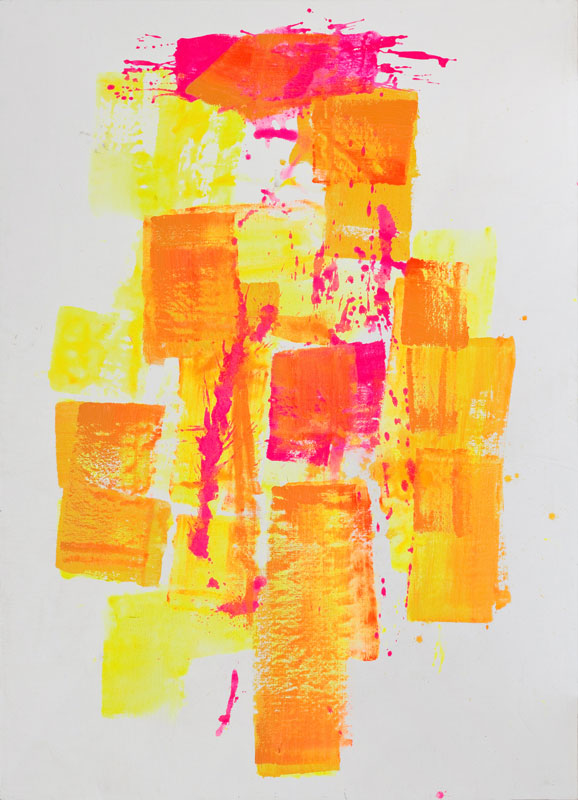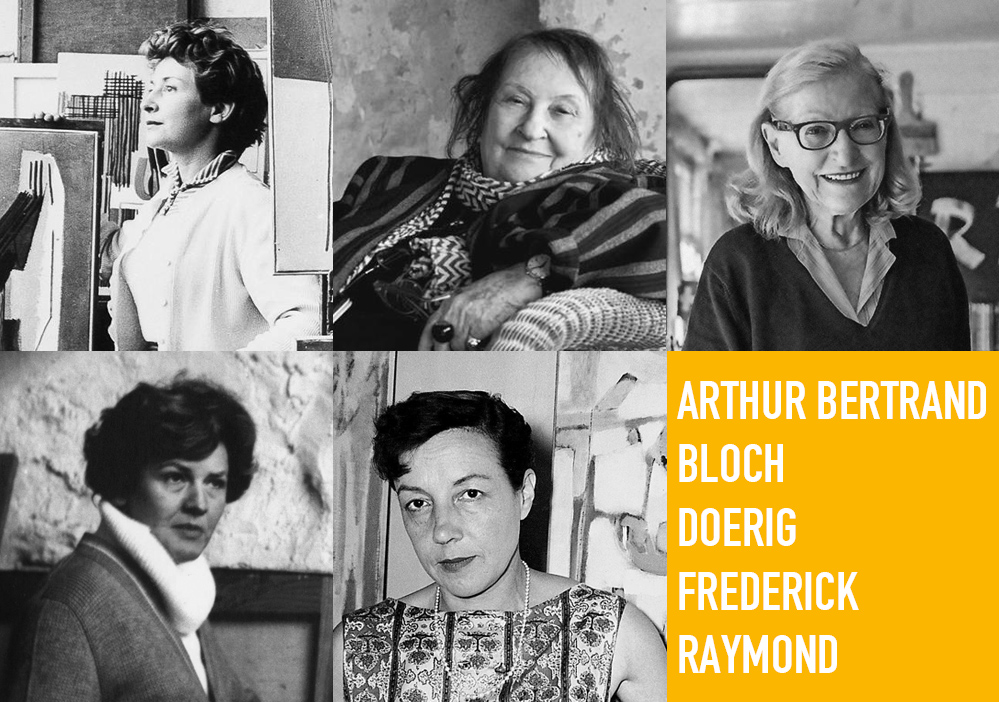WOMEN IN ABSTRACT ART:
Five women – Five artistic visions
EXHIBITION : 8 MARCH – 16 APRIL 2021
This exhibition intends to show women’s contributions to abstract painting by presenting a selection of five artists: Marie Raymond (1908–1989), Huguette Arthur Bertrand (1920–2005), Pierrette Bloch (1928–2017), Roswitha Doerig (1929–2017) and Loïs Frederick (1930–2013). These five artists constitute neither a school nor a movement, representing instead five different forms of abstraction, five hard-won freedoms.
To introduce our exhibition, we are delving into the world of each artist by examining one of their works of art.
Chapter 5:
Loïs Frederick, Untitled, c.2000
By Astrid de Monteverde

Loïs Frederick at the Cité Universitaire, Paris, 1953-1954
An American painter, Loïs Frederick was born and grew up in Nebraska. Her works are imbued with the immensity of the Great Planes region and its contrasting climates. After studying Fine Arts at the University of Nebraska and then at the Kansas City Art Institute, Loïs Frederick arrived in Paris in 1953 received a Fulbright Award: a fellowship that she even won twice! Immersed in the effervescence of Post War Abstraction in Paris, she always remained a profoundly American artist of Colorfield Painting.
Born spontaneously in the 1950s in the USA, this artistic movement, is characterized by superimposed fields of colour. Following on from the first generation of Colorfield painting painters: Mark Rothko, Arnold Gottlieb, Clyfford Still and Barnett Newman, and like her contemporary Helen Frankenthaler, Loïs Frederick worked in flat areas of colour that she used in strata, removing any depth in the work. She explored a solidly constructed style of abstraction, her works structured by the application of the paint, laid out on the canvas.
While Mark Rothko worked horizontally with his brush to build up his rectangles of colour with blurred edges, and create light and vibrancy, the painter Loïs Frederick used her gesture in ascending and descending movements, creating a network of contrasts in the visual space. Loïs Frederick used her gesture in ascending and descending movements, creating a network of contrasts in the visual space.
Moreover, while Barnett Newman used his zips, vertical elements that cut through the planes of colour on either side of his compositions and Morris Louis placed his paintbrush beyond the canvas field, Loïs Frederick worked with verticality taking into account the limited frame of her support. The paintbrush stops well before the edge of the canvas, creating a network of colour masses that are both solidly constructed and form a floating space, suited for meditation.
After a naturalist palette, in the early 1970s the artist painter Loïs Frederick adopted acrylic, and even more, fluorescent paint that allowed her to procure the most audacious of palettes, full of contrasts: strident blues, greens, yellows, pinks, that are even deafening. Nevertheless, the saturated colour allowed light to dawn from the background.
In 1986, Loïs Frederick lost her husband Gérard Schneider. She then devoted her energy for about fifteen years to promoting his art, moving for a while from being a woman artist to being the wife of an artist.
It is a visual impulse, the headlight of a car piercing fog at the start of the 2000s, that brought Loïs Frederick back to painting. Her absolute search for light pushed her to use broad paintbrushes with fluorescent, strident colours against immaculate white backgrounds, as in this painting from c.2000. The pure, untouched background lets the intensity of the light develop to its fullest, culminating in a burst of fluorescent yellow that radiates from the centre of the canvas, piercing the layers of orange-pink colours, mobile and floating, that structure the space. The size of the large-format canvas only strengthens this luminous intensity, making the work a true ode to light.


